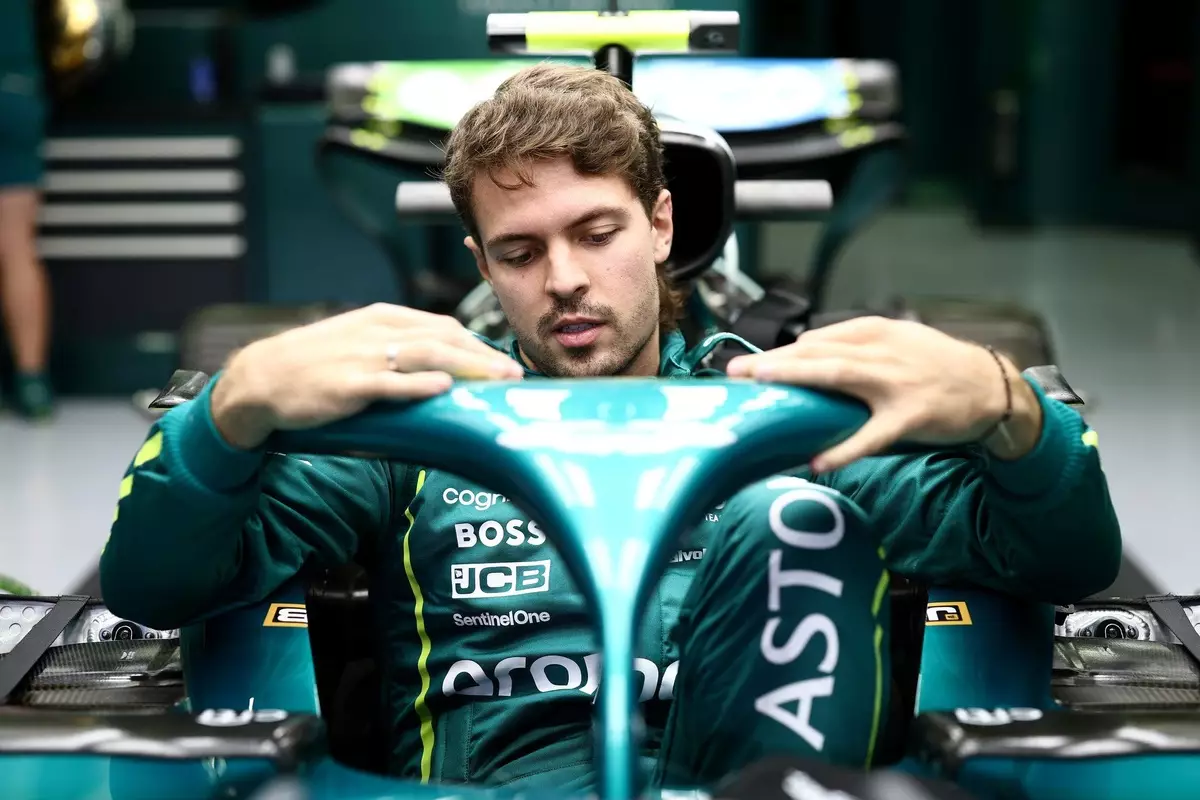In the high-octane world of motorsport, few dreams burn as brightly as that of racing in Formula 1. Felipe Drugovich, the Brazilian ace and reigning Formula 2 champion, has consistently expressed that his aspirations are firmly rooted in this premier racing series. His recent willingness to prioritize a potential seat in the Canadian Grand Prix over an anticipated entry in the prestigious Le Mans 24 Hours is emblematic of this dedication. It’s a subtle yet powerful statement about the nature of ambition in professional racing, revealing how for many, the pinnacle of automotive competition remains tethered to the allure of F1.
With Lance Stroll unable to compete due to lingering injuries from a cycling accident, the situation creates a complex landscape not just for Aston Martin, the team he drives for, but also for Drugovich. The young driver was initially set to participate in the Le Mans race with the Cadillac team at a time when his talents might have shone on the international stage. However, the unavoidable conflict has laid bare the sacrifices drivers often make in pursuit of opportunity, with Drugovich’s prioritization of F1 serving as both a personal commitment and a strategic career choice.
The Implications of Injury
Stroll’s withdrawal from the race in Spain, following a disappointing qualifying session, underscores the fragility of a driver’s career—where a single moment of misfortune can have cascading effects. The harsh reality that a broken hand and wrist could sideline Stroll and create a vacancy for Drugovich imparts a sense of urgency and unpredictability to all involved. As a reserve driver, Drugovich finds himself at the crossroads of opportunity and uncertainty; his world-class skills stand ready to be unleashed as the chance to compete at his desired level beckons.
The regulations that govern Formula 1 add a layer of complexity to the narrative. Due to the timing of Stroll’s injury—after qualifying—Aston Martin was left racing with only their main driver, Fernando Alonso. This decision impacted not just their performance in the championship but underscored the precarious status of reserve drivers, who often hover on the sidelines, prepared to step in but sometimes unable to fulfill their roles promptly. It is a unique ecosystem where timing and luck intertwine with skill, revealing the fragmented nature of success in motorsport.
Commitment Over Opportunity
Drugovich’s comments, articulated through the medium of sports journalism, emphasize his unwavering commitment to Formula 1: “My priority has always been Formula 1.” This statement resonates deeply within the motorsport community and illustrates how the ambition to race at the highest level can often supersede other lucrative engagements. Even in the face of competing obligations, such as the honour of racing at Le Mans, Drugovich is prepared to put Formula 1 first. This inclination isn’t merely a personal ethos; it reflects a broader sentiment ingrained within young drivers who view Formula 1 as the ultimate proving ground for their craft.
The contrast between his commitment to F1 and his involvement in the sports car racing arena serves to highlight the sacrifices that drivers often must navigate to carve their path in a fiercely competitive environment. Fellow reserve drivers like Stoffel Vandoorne also find themselves in a similar predicament, facing a conflict between commitments that could potentially redefine their trajectories in motorsport. The question remains: at what point do these commitments come to a head, pushing athletes to choose between racing platforms that each hold unique allure and potential career ramifications?
Strategic Partnerships and Future Aspirations
With Aston Martin’s dependence on its drivers and reserve pool, another layer of intrigue arises: could the team call upon their engine supplier, Mercedes, to tap into the availability of Valtteri Bottas for the Canadian Grand Prix? Such strategic partnerships illustrate the intricate relationships that power the F1 landscape, where alliances can lead to unexpected opportunities. The potential to secure Bottas’s services reflects not only on the immediate needs of the team but also on the long-term implications for both the team’s dynamics and Drugovich’s career.
In essence, the scenario surrounding Felipe Drugovich and his aspirations is a microcosm of the wider challenges within the world of motorsport. It showcases how ambition, timing, injuries, and strategic planning intertwine to create opportunities and hurdles along the road to success. The journey of a driver like Drugovich not only captivates fans but also serves as a reminder of the determination intrinsic to racing; a reminder that even amidst the chaos, the pursuit of Formula 1 glory remains the ultimate goal for many hungry talents in the paddock.

